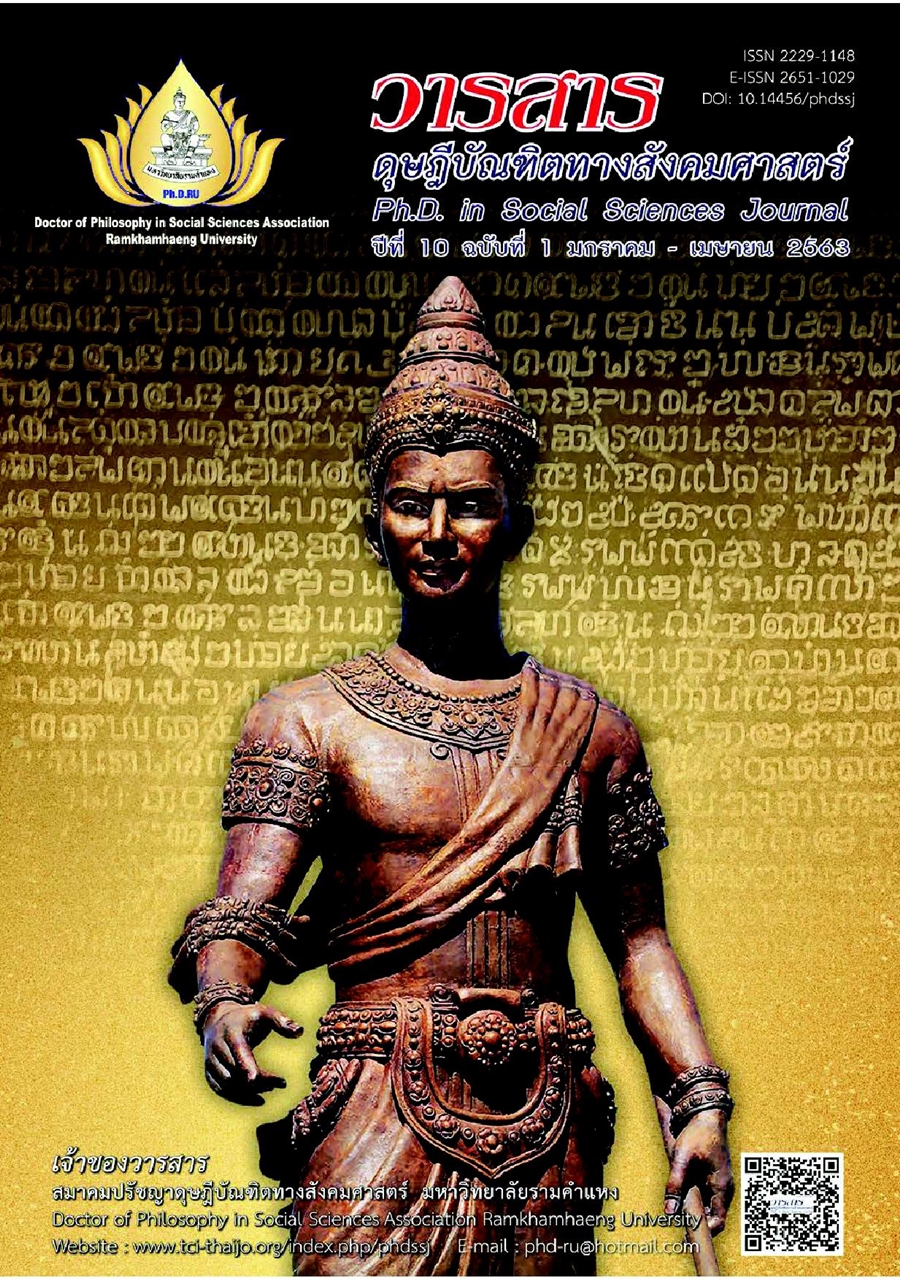Use Behaviors, Quality, and Acceptance of Open Educational Resources for Supporting Pre-degree Students’ Learning in an Academic Marketplace University
Main Article Content
Abstract
The objective of this research is (1) use behaviors, quality, and acceptance. The researcher also compares (2) the quality and the acceptance of open educational resources in supporting the learning of pre-degree students at an academic marketplace university. Using mixed research methods. Insofar as concerns the quantitative phase of research, the researcher employed frequency, percentage, mean and standard deviation as techniques of descriptive statistics for analyzing the data collected. Furthermore, the researcher utilized at test technique and the one-way analysis of variance (ANOVA) technique.
Findings are as follows: The pre-degree students occasionally used educational resources. They used e-book at 33.5 percent, e-learning at 31.6 percent, RU Cyber classroom at 41.6 percent, and course on demand at 23.7 percent. They had used educational resources for less than a year. They used smartphones for accessibility at 1 to 2 hours per session. They had learned of these resources from friends. They had never been trained in using these resources at the university.
The quality of educational resources overall and in each aspect was found to be at a high level. These students showed acceptance of these educational resources overall and in each aspect at a high level. In descending order were the aspects of perceived benefits and perceived ease of use. In addition, pre-degree students who differed in gender, age, and year of study exhibited concomitant differences in their opinions toward the quality of open educational resources overall and in each aspect, but not at the statistically significant level of .05.
Article Details
Academic articles, research articles, and book reviews in the Ph.D. in Social Sciences Journal are author’s opinions, and not the publisher’s, and is not the responsibility of the Ph.D. in Social Sciences Journal Philosophy Association, Ramkhamhaeng University. (In the case that research is done on human, the researcher has to be trained in Ethics for Doing Research on Human Training and has to produce the evidence of the training).
References
Atkins, D. E., Brown, J. S., & Hammond, A. L. (2007, February). A Review of the Open Educational Resource (OER) movement: Achievements, challenges, and new opportunities. A report to The William and Flora Hewiett Foundation.
Boonnark, S. (2009). Acceptance of e-Learning instruction and study by Ramkhamhaeng University faculty members. Master’s thesis of Arts, Ramkhamhaeng University. [In Thai]
Chanayotha, P. (2014). Open educational resources development based on service learning approach to enhance public consciousness and creative problem solving for Rajabhat University students. Doctoral dissertation in education, Chulalongkorn University. [In Thai]
Charoensuk, K. (2013). Factors affecting the use of e-Leaning technology by Pre-degree students at Ramkhamhaeng University. Master’s thesis of Arts. Ramkhamhaeng University. [In Thai]
Chatpakkarattana, T. (2013). Development of an interactive e-tutorial system to develop problem solving ability for undergraduate students in Sukhothai Thammathirat Open University. Doctoral dissertation of education, Chulalongkorn University. [In Thai]
Davis, F. D. (1989). Perceived usefulness, perceived ease of use, and user acceptance of information technology. MIS Quarterly, 13(1), 319-339.
Delone, W. H., & McLean, E. R. Information Systems success: The quest for the dependent variable. Information Systems Research, 3(1), 60-95.
Jongsermtrakoon, S. (2013). A group investigation learning system on open educational resources for digital literacy and awareness in information ethics of student teachers. Master’ thesis of education, Chulalongkorn University. [In Thai]
Karschamroom, S. (2009). Ramkhamhaeng undergraduate students’ need of information technology for learner centered instruction. Ramkhamhaeng University, Faculty of Humanities. [In Thai]
Merrill, J. C., & Lowenstein, R. L. (1971). Media, message and men: New perspectives in communication. David McKay.
Nithedsilp, W. (2008). Instructional and innovation for learning. Skybook. [In Thai]
Prasomsuk, T. (2011). The distance education system model of North-Chiang Mai University. North-Chiang Mai University Press. [In Thai]
Ractham, P., & Kaewkitipong, K. (2015). The factors and strategy to persuade the use of NSW. Thammasat University, Thammasat Business School. [In Thai]
Ramkhamhaeng University. (2015). Pre-degree student information. Retrieved from https://www.ru.ac.th/th/Predegree [In Thai]
Ramkhamhaeng University. (2016). Information of central registered students for academic year B. E. 2558. Author. [In Thai]
Rogers, E. M. (1995). Diffusion of innovations (4th ed.). The Free Press.
Ruangrit, N. (2015). States and needs of online learning resources on MOOCs for education. Silpakorn University, Faculty of Education. [In Thai]
Rugchatjaroen, K. (2010). Electronic govern in Thailand. Doctoral dissertation of doctor of philosophy, Ramkhamhaeng University. [In Thai]
Srisap, S. (2011). Utilization of information technology media by Ramkhamhaeng University students for learning in accordance with the principles of the sufficiency economy philosophy. Ramkhamhaeng University, The Office of Educational Technology. [In Thai]
Triwittayasin, S. (2014). Factors affecting web mobile technology adoption behaviors in accessing the e-Thesis database. Master’s thesis of Arts. Ramkhamhaeng University. [In Thai]
Wiley, D. (2010). Openness as catalyst for an educational reformation. Educause Review, 45(4), 15-20.
Yamane, T. (1973). Statistics: An introductory analysis (3rd ed.). New York: Harper & Row.


